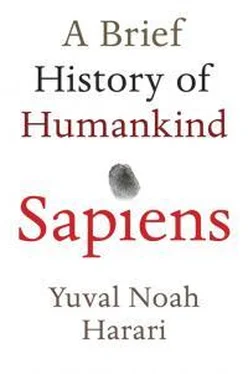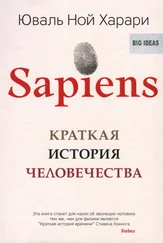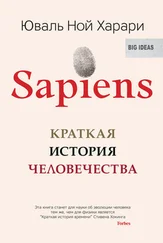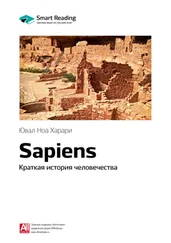There are, indeed, some positive signs. At least when we use purely material criteria – such as life expectancy, child mortality and calorie intake – the standard of living of the average human in 2014 is significantly higher than it was in 1914, despite the exponential growth in the number of humans.
Yet can the economic pie grow indefinitely? Every pie requires raw materials and energy. Prophets of doom warn that sooner or later Homo sapiens will exhaust the raw materials and energy of planet Earth. And what will happen then?
17
The Wheels of Industry
THE MODERN ECONOMY GROWS THANKS to our trust in the future and to the willingness of capitalists to reinvest their profits in production. Yet that does not suffice. Economic growth also requires energy and raw materials, and these are finite. When and if they run out, the entire system will collapse.
But the evidence provided by the past is that they are finite only in theory. Counter-intuitively, while humankind’s use of energy and raw materials has mushroomed in the last few centuries, the amounts available for our exploitation have actually increased . Whenever a shortage of either has threatened to slow economic growth, investments have flowed into scientific and technological research. These have invariably produced not only more efficient ways of exploiting existing resources, but also completely new types of energy and materials.
Consider the vehicle industry. Over the last 300 years, humankind has manufactured billions of vehicles – from carts and wheelbarrows, to trains, cars, supersonic jets and space shuttles. One might have expected that such a prodigious effort would have exhausted the energy sources and raw materials available for vehicle production, and that today we would be scraping the bottom of the barrel. Yet the opposite is the case. Whereas in 1700 the global vehicle industry relied overwhelmingly on wood and iron, today it has at its disposal a cornucopia of new-found materials such as plastic, rubber, aluminium and titanium, none of which our ancestors even knew about. Whereas in 1700 carts were built mainly by the muscle power of carpenters and smiths, today the machines in Toyota and Boeing factories are powered by petroleum combustion engines and nuclear power stations. A similar revolution has swept almost all other fields of industry. We call it the Industrial Revolution.
For millennia prior to the Industrial Revolution, humans already knew how to make use of a large variety of energy sources. They burned wood in order to smelt iron, heat houses and bake cakes. Sailing ships harnessed wind power to move around, and watermills captured the flow of rivers to grind grain. Yet all these had clear limits and problems. Trees were not available everywhere, the wind didn’t always blow when you needed it, and water power was only useful if you lived near a river.
An even bigger problem was that people didn’t know how to convert one type of energy into another. They could harness the movement of wind and water to sail ships and push millstones, but not to heat water or smelt iron. Conversely, they could not use the heat energy produced by burning wood to make a millstone move. Humans had only one machine capable of performing such energy conversion tricks: the body. In the natural process of metabolism, the bodies of humans and other animals burn organic fuels known as food and convert the released energy into the movement of muscles. Men, women and beasts could consume grain and meat, burn up their carbohydrates and fats, and use the energy to haul a rickshaw or pull a plough.
Since human and animal bodies were the only energy conversion device available, muscle power was the key to almost all human activities. Human muscles built carts and houses, ox muscles ploughed fields, and horse muscles transported goods. The energy that fuelled these organic muscle-machines came ultimately from a single source – plants. Plants in their turn obtained their energy from the sun. By the process of photosynthesis, they captured solar energy and packed it into organic compounds. Almost everything people did throughout history was fuelled by solar energy that was captured by plants and converted into muscle power.
Human history was consequently dominated by two main cycles: the growth cycles of plants and the changing cycles of solar energy (day and night, summer and winter). When sunlight was scarce and when wheat fields were still green, humans had little energy. Granaries were empty, tax collectors were idle, soldiers found it difficult to move and fight, and kings tended to keep the peace. When the sun shone brightly and the wheat ripened, peasants harvested the crops and filled the granaries. Tax collectors hurried to take their share. Soldiers flexed their muscles and sharpened their swords. Kings convened councils and planned their next campaigns. Everyone was fuelled by solar energy – captured and packaged in wheat, rice and potatoes.
The Secret in the Kitchen
Throughout these long millennia, day in and day out, people stood face to face with the most important invention in the history of energy production – and failed to notice it. It stared them in the eye every time a housewife or servant put up a kettle to boil water for tea or put a pot full of potatoes on the stove. The minute the water boiled, the lid of the kettle or the pot jumped. Heat was being converted to movement. But jumping pot lids were an annoyance, especially if you forgot the pot on the stove and the water boiled over. Nobody saw their real potential.
A partial breakthrough in converting heat into movement followed the invention of gunpowder in ninth-century China. At first, the idea of using gunpowder to propel projectiles was so counter-intuitive that for centuries gunpowder was used primarily to produce fire bombs. But eventually – perhaps after some bomb expert ground gunpowder in a mortar only to have the pestle shoot out with force – guns made their appearance. About 600 years passed between the invention of gunpowder and the development of effective artillery.
Even then, the idea of converting heat into motion remained so counter-intuitive that another three centuries went by before people invented the next machine that used heat to move things around. The new technology was born in British coal mines. As the British population swelled, forests were cut down to fuel the growing economy and make way for houses and fields. Britain suffered from an increasing shortage of firewood. It began burning coal as a substitute. Many coal seams were located in waterlogged areas, and flooding prevented miners from accessing the lower strata of the mines. It was a problem looking for a solution. Around 1700, a strange noise began reverberating around British mineshafts. That noise – harbinger of the Industrial Revolution – was subtle at first, but it grew louder and louder with each passing decade until it enveloped the entire world in a deafening cacophony. It emanated from a steam engine.
There are many types of steam engines, but they all share one common principle. You burn some kind of fuel, such as coal, and use the resulting heat to boil water, producing steam. As the steam expands it pushes a piston. The piston moves, and anything that is connected to the piston moves with it. You have converted heat into movement! In eighteenth-century British coal mines, the piston was connected to a pump that extracted water from the bottom of the mineshafts. The earliest engines were incredibly inefficient. You needed to burn a huge load of coal in order to pump out even a tiny amount of water. But in the mines coal was plentiful and close at hand, so nobody cared.
In the decades that followed, British entrepreneurs improved the efficiency of the steam engine, brought it out of the mineshafts, and connected it to looms and gins. This revolutionised textile production, making it possible to produce ever-larger quantities of cheap textiles. In the blink of an eye, Britain became the workshop of the world. But even more importantly, getting the steam engine out of the mines broke an important psychological barrier. If you could burn coal in order to move textile looms, why not use the same method to move other things, such as vehicles?
Читать дальше



![Юваль Ной Харари - Sapiens. Краткая история человечества [litres]](/books/34310/yuval-noj-harari-sapiens-kratkaya-istoriya-cheloveche-thumb.webp)





![Юваль Ной Харари - 21 урок для XXI века [Версия с комментированными отличиями перевода]](/books/412481/yuval-noj-harari-21-urok-dlya-xxi-veka-versiya-s-ko-thumb.webp)


